Mahdi Ahmadi
Generative AI Impact on Labor Market: Analyzing ChatGPT's Demand in Job Advertisements
Dec 09, 2024



Abstract:The rapid advancement of Generative AI (Gen AI) technologies, particularly tools like ChatGPT, is significantly impacting the labor market by reshaping job roles and skill requirements. This study examines the demand for ChatGPT-related skills in the U.S. labor market by analyzing job advertisements collected from major job platforms between May and December 2023. Using text mining and topic modeling techniques, we extracted and analyzed the Gen AI-related skills that employers are hiring for. Our analysis identified five distinct ChatGPT-related skill sets: general familiarity, creative content generation, marketing, advanced functionalities (such as prompt engineering), and product development. In addition, the study provides insights into job attributes such as occupation titles, degree requirements, salary ranges, and other relevant job characteristics. These findings highlight the increasing integration of Gen AI across various industries, emphasizing the growing need for both foundational knowledge and advanced technical skills. The study offers valuable insights into the evolving demands of the labor market, as employers seek candidates equipped to leverage generative AI tools to improve productivity, streamline processes, and drive innovation.
A Learning-Inspired Strategy to Design Binary Sequences with Good Correlation Properties: SISO and MIMO Radar Systems
May 15, 2023Abstract:In this paper, the design of binary sequences exhibiting low values of aperiodic/periodic correlation functions, in terms of Integrated Sidelobe Level (ISL), is pursued via a learning-inspired method. Specifcally, the synthesis of either a single or a burst of codes is addressed, with reference to both Single-Input Single-Output (SISO) and Multiple-Input Multiple-Output (MIMO) radar systems. Two optimization machines, referred to as two-layer and single-layer Binary Sequence Correlation Network (BiSCorN), able to learn actions to design binary sequences with small ISL/Complementary ISL (CISL) for SISO and MIMO systems are proposed. These two networks differ in terms of the capability to synthesize Low-Correlation-Zone (LCZ) sequences and computational cost. Numerical experiments show that proposed techniques can outperform state-of-the-art algorithms for the design of binary sequences and Complementary Sets of Sequences (CSS) in terms of ISL and, interestingly, of Peak Sidelobe Level (PSL).
Image Seam-Carving by Controlling Positional Distribution of Seams
Dec 31, 2019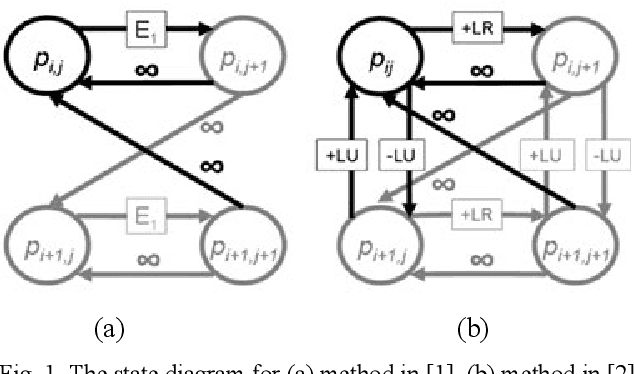
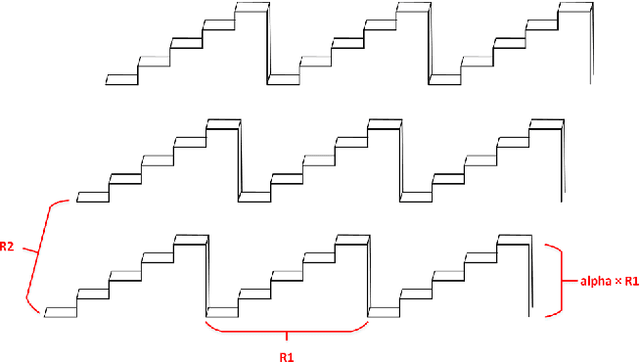
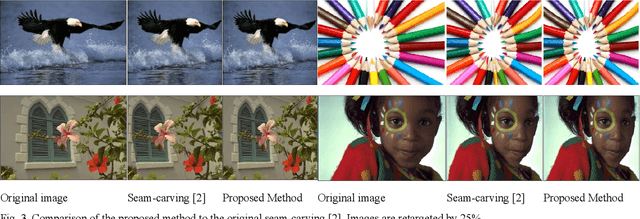

Abstract:Image retargeting is a new image processing task that renders the change of aspect ratio in images. One of the most famous image-retargeting algorithms is seam-carving. Although seam-carving is fast and straightforward, it usually distorts the images. In this paper, we introduce a new seam-carving algorithm that not only has the simplicity of the original seam-carving but also lacks the usual unwanted distortion existed in the original method. The positional distribution of seams is introduced. We show that the proposed method outperforms the original seam-carving in terms of retargeted image quality assessment and seam coagulation measures.
Context-Aware Saliency Detection for Image Retargeting Using Convolutional Neural Networks
Oct 17, 2019Abstract:Image retargeting is the task of making images capable of being displayed on screens with different sizes. This work should be done so that high-level visual information and low-level features such as texture remain as intact as possible to the human visual system, while the output image may have different dimensions. Thus, simple methods such as scaling and cropping are not adequate for this purpose. In recent years, researchers have tried to improve the existing retargeting methods and introduce new ones. However, a specific method cannot be utilized to retarget all types of images. In other words, different images require different retargeting methods. Image retargeting has a close relationship to image saliency detection, which is relatively a new image processing task. Earlier saliency detection methods were based on local and global but low-level image information. These methods are called bottom-up methods. On the other hand, newer approaches are top-down and mixed methods that consider the high level and semantic information of the image too. In this paper, we introduce the proposed methods in both saliency detection and retargeting. For the saliency detection, the use of image context and semantic segmentation are examined, and a novel mixed bottom-up, and top-down saliency detection method is introduced. After saliency detection, a modified version of an existing retargeting method is utilized for retargeting the images. The results suggest that the proposed image retargeting pipeline has excellent performance compared to other tested methods. Also, the subjective evaluations on the Pascal dataset can be used as a retargeting quality assessment dataset for further research.
ReDMark: Framework for Residual Diffusion Watermarking on Deep Networks
Oct 16, 2018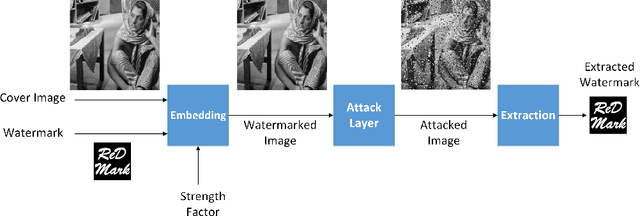
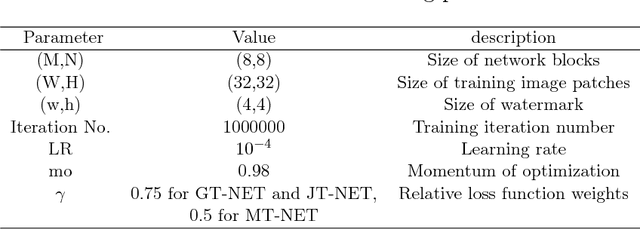
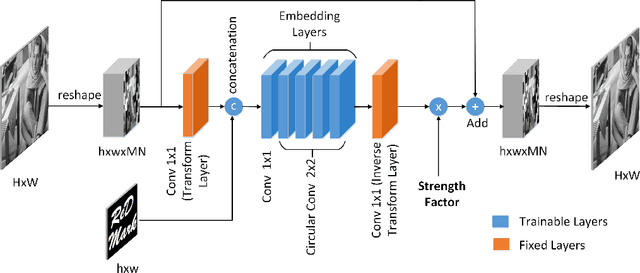

Abstract:Due to the rapid growth of machine learning tools and specifically deep networks in various computer vision and image processing areas, application of Convolutional Neural Networks for watermarking have recently emerged. In this paper, we propose a deep end-to-end diffusion watermarking framework (ReDMark) which can be adapted for any desired transform space. The framework is composed of two Fully Convolutional Neural Networks with the residual structure for embedding and extraction. The whole deep network is trained end-to-end to conduct a blind secure watermarking. The framework is customizable for the level of robustness vs. imperceptibility. It is also adjustable for the trade-off between capacity and robustness. The proposed framework simulates various attacks as a differentiable network layer to facilitate end-to-end training. For JPEG attack, a differentiable approximation is utilized, which drastically improves the watermarking robustness to this attack. Another important characteristic of the proposed framework, which leads to improved security and robustness, is its capability to diffuse watermark information among a relatively wide area of the image. Comparative results versus recent state-of-the-art researches highlight the superiority of the proposed framework in terms of imperceptibility and robustness.
Artistic Instance-Aware Image Filtering by Convolutional Neural Networks
Sep 22, 2018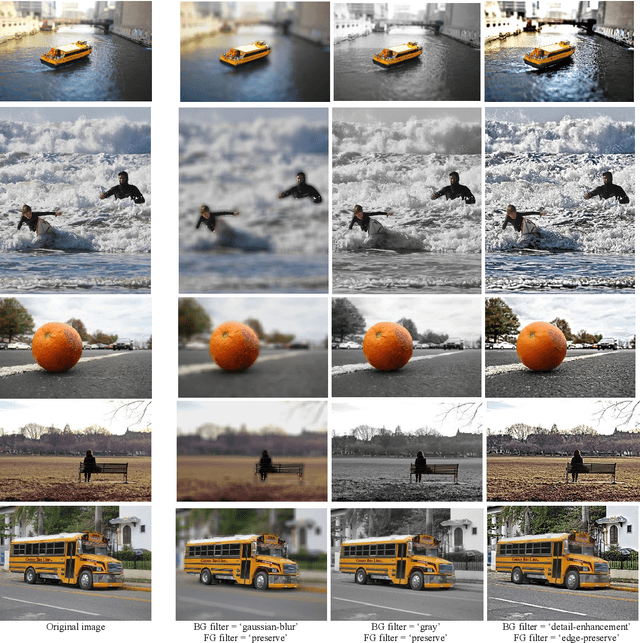

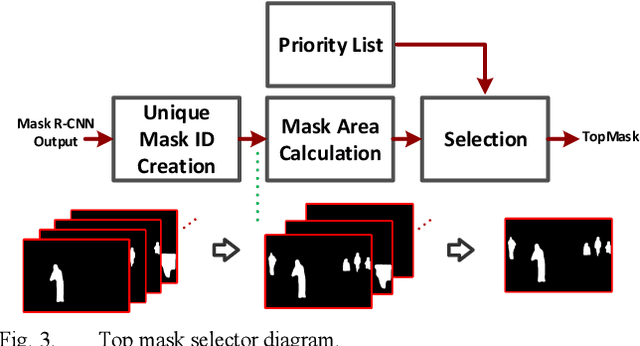
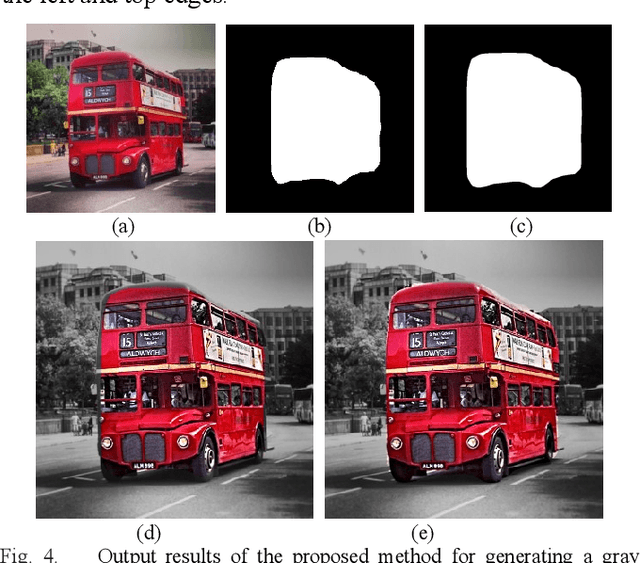
Abstract:In the recent years, public use of artistic effects for editing and beautifying images has encouraged researchers to look for new approaches to this task. Most of the existing methods apply artistic effects to the whole image. Exploitation of neural network vision technologies like object detection and semantic segmentation could be a new viewpoint in this area. In this paper, we utilize an instance segmentation neural network to obtain a class mask for separately filtering the background and foreground of an image. We implement a top prior-mask selection to let us select an object class for filtering purpose. Different artistic effects are used in the filtering process to meet the requirements of a vast variety of users. Also, our method is flexible enough to allow the addition of new filters. We use pre-trained Mask R-CNN instance segmentation on the COCO dataset as the segmentation network. Experimental results on the use of different filters are performed. System's output results show that this novel approach can create satisfying artistic images with fast operation and simple interface.
Lossless Compression of Angiogram Foreground with Visual Quality Preservation of Background
Feb 21, 2018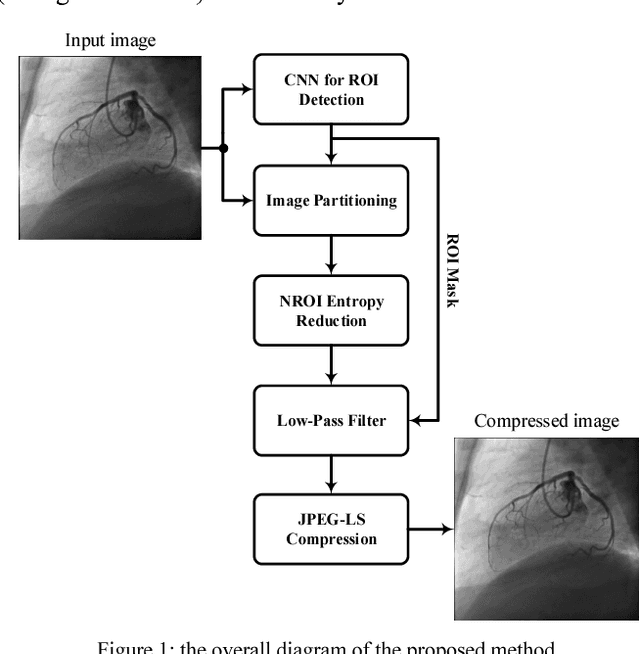
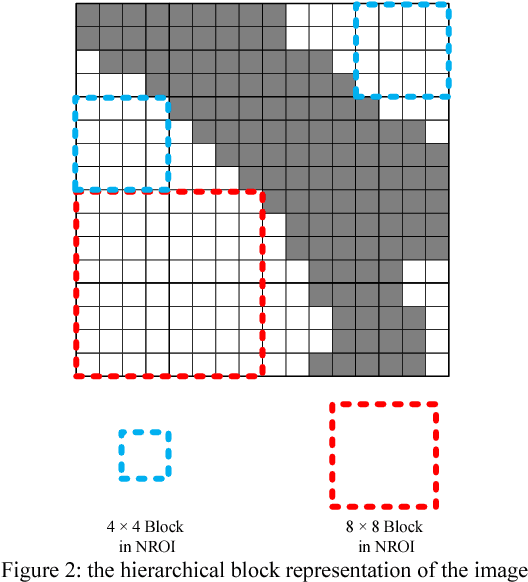
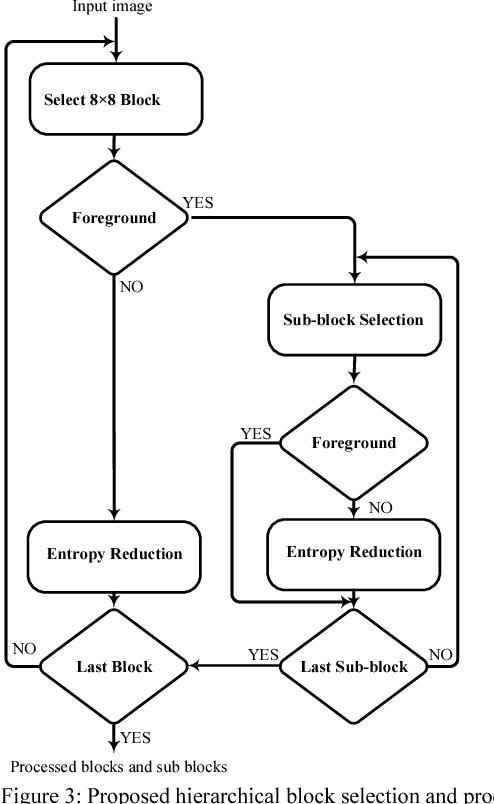

Abstract:By increasing the volume of telemedicine information, the need for medical image compression has become more important. In angiographic images, a small ratio of the entire image usually belongs to the vasculature that provides crucial information for diagnosis. Other parts of the image are diagnostically less important and can be compressed with higher compression ratio. However, the quality of those parts affect the visual perception of the image as well. Existing methods compress foreground and background of angiographic images using different techniques. In this paper we first utilize convolutional neural network to segment vessels and then represent a hierarchical block processing algorithm capable of both eliminating the background redundancies and preserving the overall visual quality of angiograms.
Context aware saliency map generation using semantic segmentation
Jan 03, 2018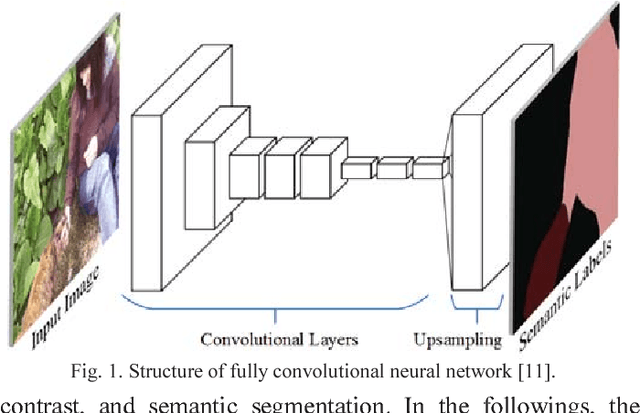
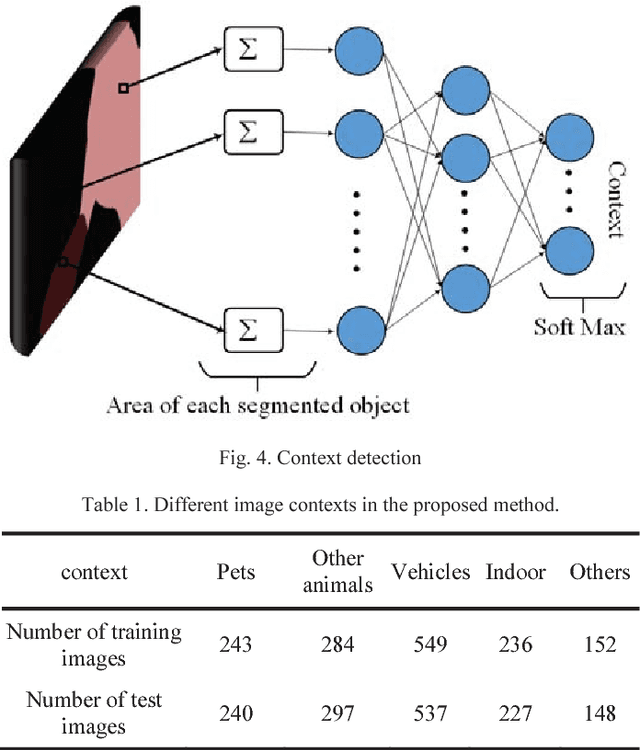

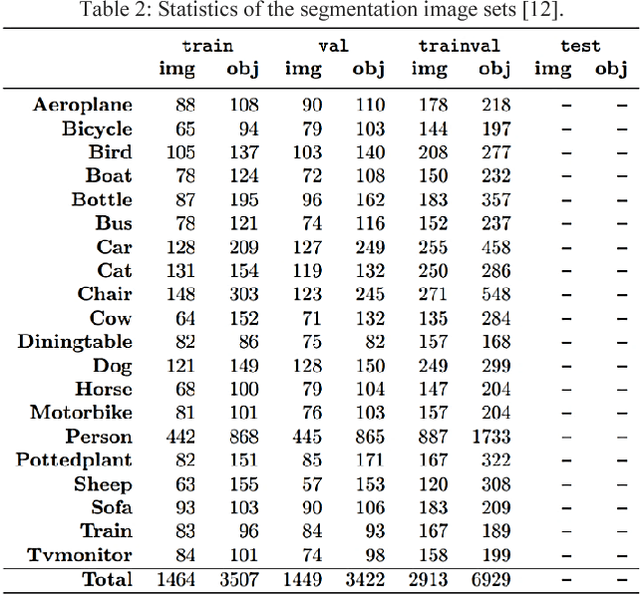
Abstract:Saliency map detection, as a method for detecting important regions of an image, is used in many applications such as image classification and recognition. We propose that context detection could have an essential role in image saliency detection. This requires extraction of high level features. In this paper a saliency map is proposed, based on image context detection using semantic segmentation as a high level feature. Saliency map from semantic information is fused with color and contrast based saliency maps. The final saliency map is then generated. Simulation results for Pascal-voc11 image dataset show 99% accuracy in context detection. Also final saliency map produced by our proposed method shows acceptable results in detecting salient points.
 Add to Chrome
Add to Chrome Add to Firefox
Add to Firefox Add to Edge
Add to Edge